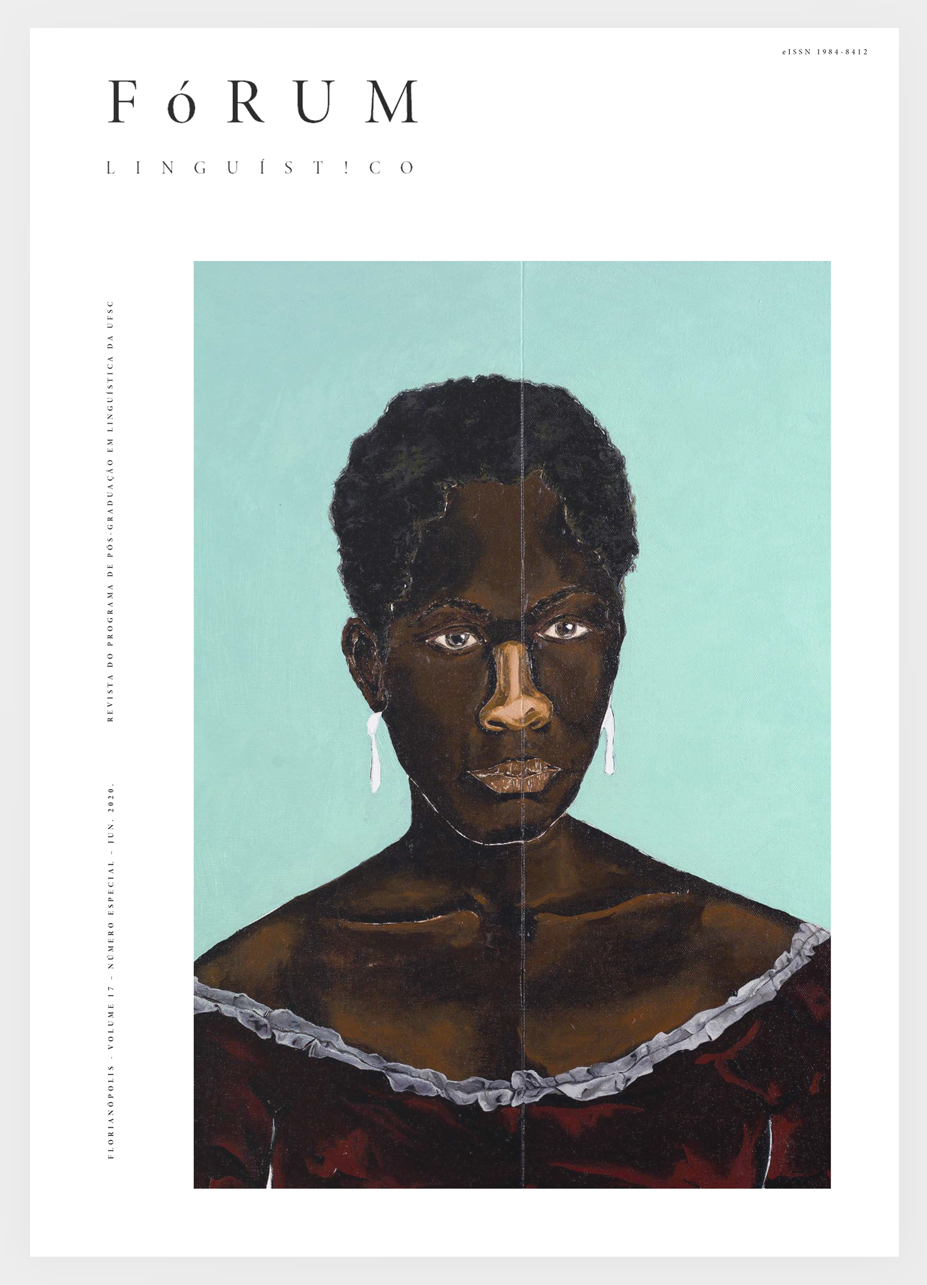The phrasal pattern [trem + adjective] from the perspective of the Construction Grammar
DOI:
https://doi.org/10.5007/1984-8412.2020v17n2p4809Abstract
This paper examines the phrasal pattern [TREM + adjective], in 1000 occurrences of Twitter samples, aiming to ascertain - from the perspective of the Construction Grammar and the Language Based Model of Use and Grammaticalization - if this pattern is a construction of Brazilian Portuguese, applicable not only to objects, but also to people. Evidence was found that, in informal usage, the phrasal pattern [TREM + adjective] refers to people in contexts where there is no depreciation of the referent, as usually occurs with the name train alone, which attests to the hypothesis that it is of a Brazilian Portuguese construction.
References
AMARAL, E. T. R.; RAMOS, J. M. Nomes gerais no português brasileiro. Belo Horizonte: Faculdade de Letras da UFMG, 2014.
AMARAL, E. T. R. Análise de um nome geral na fala dos mineiros: para que serve esse trem? Revista Trama, v. 10, n. 20, p. 27-43, 2014. Disponível em: http://e-revista.unioeste.br/index.php/trama/article/view/9486. Acesso em: 11 out. 2018.
BYBEE, J. Usage-based theory and exemplar representations of constructions. In: HOFFMANN, T.; TROUSDALE, G. (ed.). The Oxford Handbook of construction grammar. Oxford: Oxford University Press, 2013. p. 52-66.
GOLDBERG, A. E. Constructions: a construction grammar approach to argument structure. Chicago: The University of Chicago Press, 1995.
HALLIDAY, M. A. K.; HASAN, R. Cohesion in English. London/New York: Longman, 1995 [1976].
HEINE, B.; RECH, M. Grammatical categories in African languages. Hamburgo: Helmut Buske, 1984.
HEINE, B. Grammaticalization. In: JOSEPH, B.; JANDA, R. D. (ed.). The Handbook of Historical Linguistics. Oxford: Blackwell, 2003. p. 575-601.
OLIVEIRA, C. M. G. M. de. O substantivo-suporte: critérios operacionais de caracterização. 2006. 121 f. Tese (Doutorado em Estudos Linguísticos) - Faculdade de Letras. Pontifícia Universidade Católica do Rio de Janeiro, Rio de Janeiro, 2006. Disponível em: http://www.dominiopublico.gov.br/pesquisa/DetalheObraForm.do?select_action=&co_obra=61768. Acesso em: 10 out. 2018.
MAHLBERG, M. English general nouns. Amsterdam/Philadelphia: John Benjamins, 2005.
MIHATSCH, W. Kognitive Grundlagen lexikalischer Hierarchien untersucht am Beispiel des Französischen und Spanischen. Tübingen: Niemeyer, 2006.
RAMOS, J. M. O surgimento de um nome geral: a lexia trem no dialeto mineiro. In: RAMOS, J. M.; COELHO, S. M. Português brasileiro dialetal: temas gramaticais. Campinas: Mercado de Letras, 2013. p.137-147.
SCHMID, H. J. English abstract nouns as conceptual shells. Berlin; New York: Mouton de Gruyter, 2000.
TRAUGOTT, E. C.; TROUSDALE, G. G. Constructionalization and Constructional Change. Oxford University Press: Oxford, 2013.
TREM. In: AULETE Dicionário Digital. Rio de Janeiro: Lexicon Editora Digital. Disponível em: http://www.aulete.com.br/trem. Acesso em: 12 jun. 2018.



